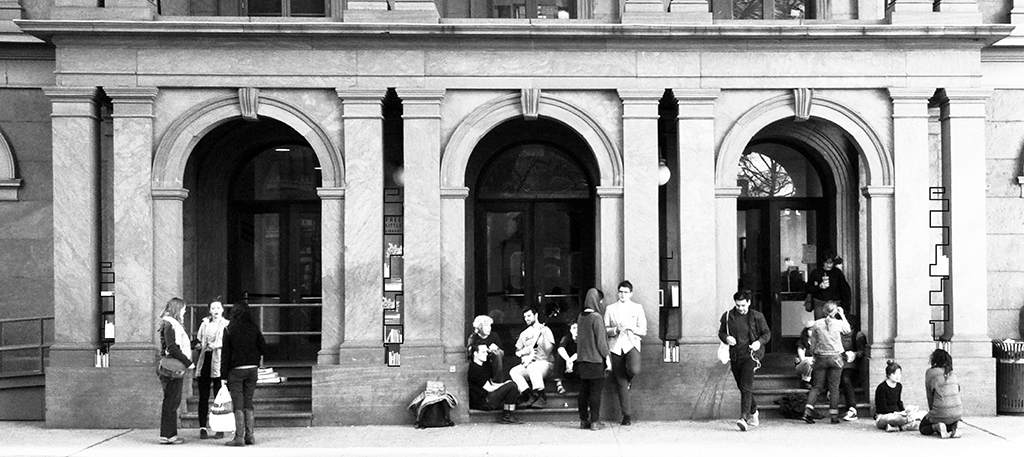Design Study
The Irwin S. Chanin School of Architecture’s Design III studio design a Little Free Library
An open-source design for Little Free Library/NYC
Design Team: The Irwin S. Chanin School of Architecture’s Design III studio with Maja Hjertén Knutson and Christopher Taleff, design leaders; Michael Young, David Allin and Lydia Kallipoliti, faculty team
Community Partner: The Cooper Union for the Advancement of Science and Architecture
Over the past year, the Third Year Design Studio at The Irwin S. Chanin School of Architecture of The Cooper Union has been engaged in the study of the library as a building type. The Fall semester had the students embroiled in intensive analysis of library precedents (15 projects from Michelangelo’s 1532 Laurentian Library to Fujimoto’s 2010 Musashino Art University Library). The spring semester finds the students deep into the design of their own library proposals, developing some startling re-imaginations of the library condition. Our proposal is to have the entire studio work on a charrette to propose and debate, with a selected design fabricated and installed by the studio as a whole.
We propose siting the project at The Cooper Union. One of Peter Cooper’s original programs for his “Union” was a free reading room on the first floor of the Foundation Building. At the time it opened, all libraries in New York City were private, requiring membership for entry. The Cooper Union’s reading room was open Monday through Saturday (and Sunday beginning in 1872), from 8 in the morning until 10 at night. It subscribed to over 200 periodicals: 15 domestic and foreign newspapers (twelve from New York alone), 64 domestic and foreign weeklies, 108 magazines, 22 French papers and magazines, and 26 German papers and magazines. Within months, the Reading Room was hosting 3,000 visitors per week, also providing free ink and paper for writing. By 1863, its subscriptions had climbed to over 270 foreign and domestic publications, a reference library boasted 4,000 volumes, and the room received 4,000 visitors per week, more than all other reading rooms and libraries in the city combined.
It is through the inspiration of this first historic reading room at Cooper that the students wish to approach the project, re-emphasizing the book itself, the act of reading, and the potential for a free exchange unconstrained by curatorial oversight. The Little Free Library offers the potential for respite and a moment’s escape from the city, but chance encounter as well. The project echoes Cooper’s own ethos of the exchange of thought, ideas, and knowledge, “as free as air and water.”

